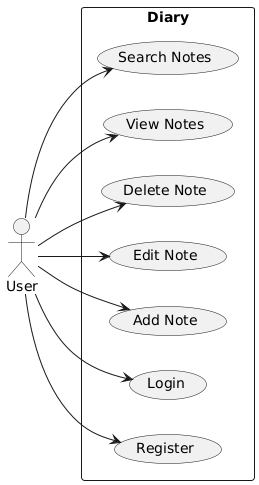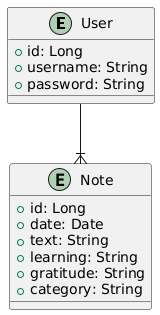- Description: A Java-based personal diary application that allows users to record daily notes, view previous entries, and search diary content.
- Objective: Provide a secure and user-friendly platform for maintaining a digital personal diary.
- User Registration
- Login/Authentication
- Add Note
- View Notes
- Search Notes
- Edit and Delete Notes
- RF01: User registration
- RF02: Authentication of registered users
- RF03: Addition of new notes to the diary
- RF04: Viewing previous notes
- RF05: Keyword search in diary notes
- RF06: Editing and deleting notes
- RNF01: User data security
- RNF02: Responsiveness across different devices
- RNF03: Ease of use and intuitive interface
- RNF04: Scalability to support multiple users
- Presentation Layer: User interface (JavaFX or Spring Boot with Thymeleaf)
- Business Logic Layer: Services handling business rules
- Persistence Layer: Interaction with PostgreSQL database
- Security Layer: Authentication and authorization management
Description of the main use cases:
- Register: Allows new users to register in the system.
- Login: Allows registered users to log into the system.
- Add Note: Allows users to add new notes to the diary.
- Edit Note: Allows users to edit existing notes in the diary.
- Delete Note: Allows users to delete notes from the diary.
- View Notes: Allows users to view their previous notes.
- Search Notes: Allows users to search for notes based on keywords.
Entities and relationships:
- User: Stores user information including username and password.
- Note: Stores diary entries with date, text content, learning, gratitude, and category attributes.
Classes and relationships:
- User: Represents the user entity with attributes id, username, password, and notes.
- Note: Represents the note entity with attributes id, date, text, learning, gratitude, category, and user.
- UserRepository: Interface for CRUD operations on User entities.
- NoteRepository: Interface for CRUD operations on Note entities.
- UserService: Service class containing business logic for user operations.
- NoteService: Service class containing business logic for note operations.


